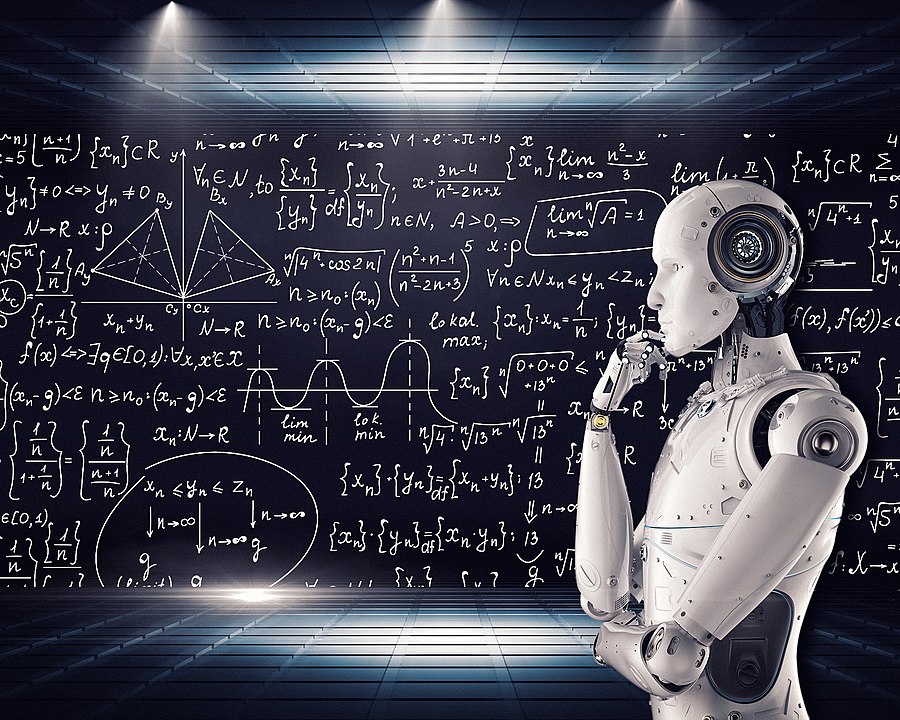The Evolution of Artificial Intelligence: From Early Concepts to Modern Applications

Artificial Intelligence (AI) has evolved significantly over the past few decades, transforming from a theoretical concept into a powerful technological force that permeates nearly every aspect of our lives. From its humble beginnings in academic research labs to its widespread application in industries such as healthcare, finance, and transportation, the journey of AI has been marked by breakthroughs, challenges, and paradigm shifts. In this article, we will explore the evolution of artificial intelligence, tracing its origins, milestones, and contemporary applications, and examining the implications of its rapid advancement for society and the future.
Origins of Artificial Intelligence The roots of artificial intelligence can be traced back to ancient civilizations, where myths and legends depicted machines endowed with human-like intelligence and agency. However, the modern concept of AI emerged in the mid-20th century, with the pioneering work of researchers such as Alan Turing, John McCarthy, and Marvin Minsky. In 1950, Alan Turing proposed the Turing Test, a benchmark for evaluating a machine's ability to exhibit human-like intelligence, laying the groundwork for the field of artificial intelligence. Shortly thereafter, John McCarthy coined the term "artificial intelligence" and organized the Dartmouth Conference in 1956, which is widely regarded as the birth of AI as a formal academic discipline.
The roots of artificial intelligence can be traced back to ancient civilizations, where myths and legends depicted machines endowed with human-like intelligence and agency. However, the modern concept of AI emerged in the mid-20th century, with the pioneering work of researchers such as Alan Turing, John McCarthy, and Marvin Minsky. In 1950, Alan Turing proposed the Turing Test, a benchmark for evaluating a machine's ability to exhibit human-like intelligence, laying the groundwork for the field of artificial intelligence. Shortly thereafter, John McCarthy coined the term "artificial intelligence" and organized the Dartmouth Conference in 1956, which is widely regarded as the birth of AI as a formal academic discipline.
Early Developments in AI
During the 1950s and 1960s, AI research was largely focused on symbolic or rule-based approaches, which sought to replicate human intelligence through logical reasoning and symbolic manipulation. One of the earliest AI systems, the Logic Theorist developed by Allen Newell and Herbert Simon in 1956, was capable of proving mathematical theorems using symbolic reasoning. This was followed by the development of other early AI programs, such as the General Problem Solver (GPS) and the Shakey robot, which demonstrated the feasibility of symbolic AI for solving problems in various domains.
However, symbolic AI soon faced limitations in dealing with the complexity and uncertainty of real-world problems, leading researchers to explore alternative approaches. In the 1980s and 1990s, the field of AI witnessed the emergence of connectionist or neural network-based approaches, inspired by the structure and function of the human brain. Neural networks, which consist of interconnected nodes or "neurons" that process and transmit information, offered a more flexible and scalable approach to modeling complex systems and learning from data.
The Rise of Machine Learning and Data-Driven AI
The advent of machine learning algorithms and techniques revolutionized the field of artificial intelligence, enabling computers to learn from data and make predictions or decisions without explicit programming. One of the key milestones in this evolution was the development of the perceptron by Frank Rosenblatt in 1957, which laid the foundation for modern neural network-based machine learning. However, progress in machine learning was hampered by limitations in computing power and data availability until the late 20th century.
The rise of the internet and digital technologies in the late 20th and early 21st centuries unleashed a deluge of data, fueling the growth of machine learning and data-driven AI. Breakthroughs in algorithms such as deep learning, which involves training neural networks with multiple layers of interconnected neurons, enabled unprecedented advances in areas such as image recognition, natural language processing, and speech recognition. Applications of machine learning and AI proliferated across industries, from recommendation systems and virtual assistants to autonomous vehicles and medical diagnosis.
Contemporary Applications of Artificial Intelligence Today, artificial intelligence is ubiquitous, permeating nearly every aspect of our daily lives and transforming industries, economies, and societies. In healthcare, AI-powered diagnostic systems and medical imaging algorithms are improving patient outcomes, accelerating drug discovery, and revolutionizing personalized medicine. In finance, AI-driven algorithms are optimizing investment strategies, detecting fraud, and automating trading operations. In transportation, AI-enabled autonomous vehicles are reshaping urban mobility, reducing accidents, and improving efficiency.
Today, artificial intelligence is ubiquitous, permeating nearly every aspect of our daily lives and transforming industries, economies, and societies. In healthcare, AI-powered diagnostic systems and medical imaging algorithms are improving patient outcomes, accelerating drug discovery, and revolutionizing personalized medicine. In finance, AI-driven algorithms are optimizing investment strategies, detecting fraud, and automating trading operations. In transportation, AI-enabled autonomous vehicles are reshaping urban mobility, reducing accidents, and improving efficiency.
Moreover, AI is playing an increasingly prominent role in addressing global challenges such as climate change, resource scarcity, and public health. AI-powered predictive modeling and simulation tools are helping scientists and policymakers understand and mitigate the impacts of climate change, predict natural disasters, and optimize resource allocation. In public health, AI is being used to analyze epidemiological data, track disease outbreaks, and develop precision medicine approaches tailored to individual patients' genetic profiles.
Challenges and Ethical Considerations However, the rapid advancement of artificial intelligence also raises significant challenges and ethical considerations that must be addressed. One of the most pressing concerns is the potential for AI to exacerbate social inequalities and biases, both in terms of access to AI technologies and the distribution of benefits and risks. There is a risk that AI-powered systems may perpetuate or amplify existing biases and discrimination, particularly if they are trained on biased data or reflect the values and perspectives of their creators.
However, the rapid advancement of artificial intelligence also raises significant challenges and ethical considerations that must be addressed. One of the most pressing concerns is the potential for AI to exacerbate social inequalities and biases, both in terms of access to AI technologies and the distribution of benefits and risks. There is a risk that AI-powered systems may perpetuate or amplify existing biases and discrimination, particularly if they are trained on biased data or reflect the values and perspectives of their creators.
Moreover, the widespread adoption of AI raises questions about accountability, transparency, and governance. As AI systems become increasingly autonomous and opaque, it becomes challenging to understand how they make decisions and to hold them accountable for their actions. Moreover, there is a need for robust regulatory frameworks and ethical guidelines to ensure that AI technologies are developed and deployed in a manner that is fair, transparent, and aligned with societal values and norms.
Future Directions and Outlook
Looking ahead, the evolution of artificial intelligence is likely to continue at a rapid pace, driven by advances in computing power, data availability, and algorithmic innovation. Breakthroughs in areas such as reinforcement learning, quantum computing, and neuromorphic computing hold promise for unlocking new frontiers in AI research and applications. Moreover, interdisciplinary collaborations between AI researchers, domain experts, and stakeholders will be essential for addressing complex challenges and harnessing the transformative potential of AI for the benefit of humanity. In conclusion, the evolution of artificial intelligence has been characterized by remarkable progress, from early conceptualizations to modern applications that permeate nearly every aspect of our lives. While AI offers tremendous opportunities for innovation, economic growth, and societal advancement, it also poses significant challenges and ethical considerations that must be addressed. By fostering responsible AI research, promoting diversity and inclusion in AI development, and engaging in open dialogue and collaboration, we can ensure that artificial intelligence continues to serve as a force for good and a catalyst for positive change in the years to come.
In conclusion, the evolution of artificial intelligence has been characterized by remarkable progress, from early conceptualizations to modern applications that permeate nearly every aspect of our lives. While AI offers tremendous opportunities for innovation, economic growth, and societal advancement, it also poses significant challenges and ethical considerations that must be addressed. By fostering responsible AI research, promoting diversity and inclusion in AI development, and engaging in open dialogue and collaboration, we can ensure that artificial intelligence continues to serve as a force for good and a catalyst for positive change in the years to come.































